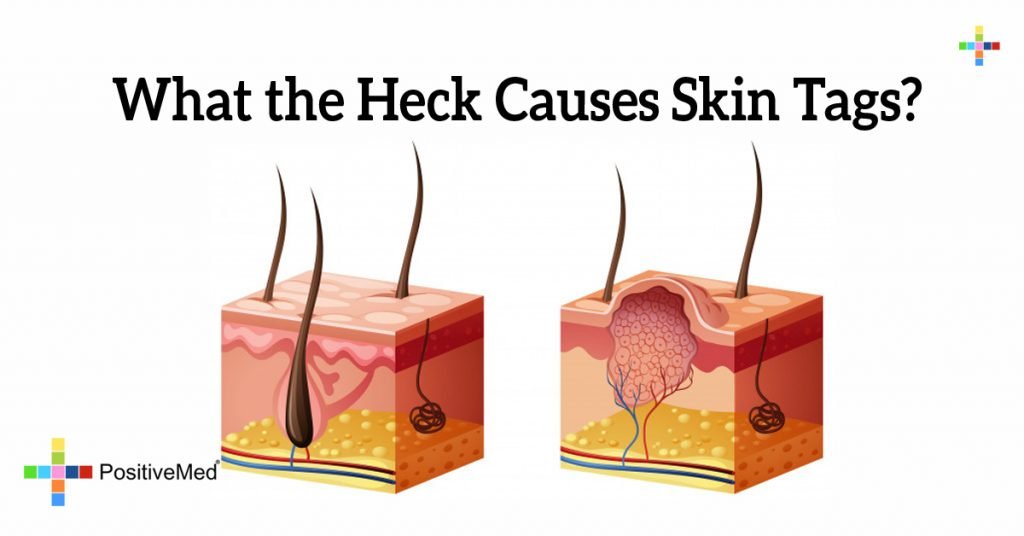
What the Heck Causes Skin Tags?
Skin Tags, Causes and Treatments
By PositiveMed-Team
Edited By Stephanie Dawson
Acrochordon, more commonly known as skin tags, is an overgrowth of skin tissue which in most cases is harmless. They look like extra pieces of skin and can happen to anyone. Skin tags often appear post midlife, most often at those parts of the body where skin rubs against skin. Some of the most common places where skin tags are formed are eyelids, under the breasts, arm pits, and upper chest. Here are some causes and treatments for skin tags:
Causes:
1. The exact cause of skin tags is still unknown, some people believe that genetics are responsible.
2. Some experts believe that the friction between areas of skin is responsible for skin tags. That’s why tags often form on areas of skin where it rubs against other body parts.
3. Those suffering from obesity are more prone to skin tags and may develop 1- 100 skin tags, the reason is there is more skin so it rubs more, giving rise to skin tags.
4. Various studies show that skin tags may be inherited.
5. People with diabetes and pregnant women are more likely to get skin tags, men and women are equally prone to them.
6. Studies suggest that steroid abuse may give rise to skin tags.
Treatment options:
Though skin tags are generally harmless, they are often not pleasant to look at, and in armpits can cause irritation when shaving. There are various treatment options for getting rid of skin tags, some are mentioned below.
1. Cauterization-This method of skin tag removal is based on heat. This method identifies skin tags and burns them using electrolysis. This treatment should only be performed by an expert dermatologist.
2. Cryosurgery– In this method the skin tags are frozen and removed. A probe containing liquid nitrogen is used. This method of treatment should be performed by expert dermatologists. Getting tags removed through this method may lead to side effects such as dyschromic lesions.
3. Ligation– In this method of skin tag removal the blood supply to the overgrown skin tags is blocked using copper wire or some other thing. Without blood supply the skin tag tissues do not receive the nutrition they require to sustain and fall off after 7-10 days.
4. Excision– This method is particularly suitable for very small skin tags. Treatment through this method involves cutting the tags off using a surgical scissor or scalpel. The decision of identifying if the tag is small and can be cut off or not should be left on the skin specialist.
The treatments above are surgical treatments, skin tags can also be removed using herbal treatments.
1. Garlic juice is effective in removing skin tags. Crush the garlic and remove juice, apply to the skin tag and cover with a bandage. Change the bandage three times a day.
2. Ginger is effective in skin tag removal. Rubbing raw ginger on the skin tags for a 2-3 weeks may get rid of them.
3. Banana peels can be used to remove skin tags. Cut the banana peel into small pieces and place one piece on the skin tag every night. Let it remain there with a bandage and repeat the process until the tag vanishes.
4. Mixing baking soda with castor oil results in an ointment that can be used to remove skin tags. Apply the ointment to the tag until it falls off. If you do not like the odor you can add a few drops of citrus oil.





